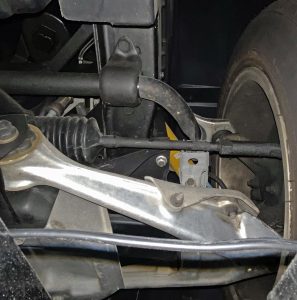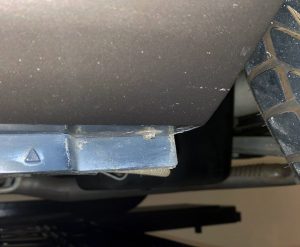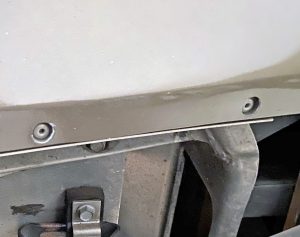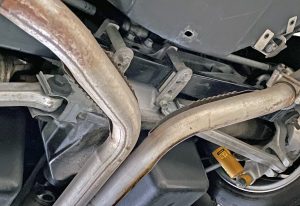Media | Articles
Piston Slap: Dave McLellan puts the “proof” in C4 Corvette Rustproofing

Corvette Chief Engineer (1975–92) Dave McLellan writes:
I’ve watched a number of programs on cable TV where they were trying to resurrect an interesting car from the post WWII era only to find it had turned to rust and just became very expensive or was beyond repair. This problem also invaded the Corvette world—on the outside a reinforced plastic body that didn’t rust but on the inside steel reinforcements everywhere and, of course, a steel frame, suspension, etc.
The steel frame also had pockets that were subject to poultice corrosion. Even thick steel frame details could literally disappear over time. When we did what became the C4, we knew we had to do better, and we did!
- The steel frame including its upper structure was entirely made of galvanized steel.
- The suspension was done in forged aluminum.
- All the steel bolts that were into aluminum were epoxy coated to avoid galvanic corrosion of the aluminum.
- All the small fasteners that held trim were stainless.
This level of corrosion protection held through the entire C4 program.
Sajeev:
Marketplace
Buy and sell classics with confidence
It’s a big deal for me to have Mr. McLellan email Hagerty, so I found photographic evidence to boost his informative note about C4 Corvette rustproofing. Photographing a well-used C4 from the Midwest would be ideal, but we must make do with this this low mile, mostly untouched 1985 Corvette in Houston.
Those C4 steel frames are zinc coated, primed, and then painted black; it’s gonna take a lot of abuse (or a poor collision repair) to rust one of these out. Also note the forged aluminum lower control arm, with no visible galvanic corrosion around the steel bolts (two pictured) over the last 35 years.
The bolt ahead of the rear wheel holds the fiberglass rocker panel to the C4’s chassis; perhaps you can confirm it’s a stainless affair.
Ditto the stainless pop rivets attaching the C4’s rear bumper.
That’s not to say C4 Corvettes are entirely corrosion proof. Always check the battery tray (remove the side panel for access), the windshield frame under the rubber seals, and other places where road salts, dirt and water can be trapped. Focus on the rear subframe, the rear bumper, and around the spare tire well, but the odds are you won’t come even close to a terminal rust diagnosis.
Because from what owners say online, even in comments as recent as 2019, the C4 has little to worry about in terms of rust repairs. And that’s a great place to be for anyone restoring a classic car, Corvette or otherwise.
Have a question you’d like answered on Piston Slap? Send your queries to pistonslap@hagerty.com, give us as much detail as possible so we can help! If you need an expedited resolution, make a post on the Hagerty Community!


















